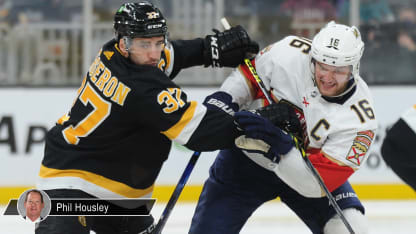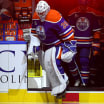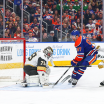The Coaches Room is a regular feature throughout the 2022-23 regular season by former NHL coaches and assistants who will turn their critical gaze to the game and explain it through the lens of a teacher. Phil Housley and Mark Recchi will take turns providing insight.
In this edition, Housley, a Hockey Hall of Fame defenseman who coached the Buffalo Sabres and was an assistant with the Nashville Predators and Arizona Coyotes, discusses the importance of breakouts and how they are connected to being successful defensively and offensively.
Teams consistently executing breakouts usually qualify for playoffs
Housley says communication, transition, possession all go hand in hand

By
Phil Housley
Special to NHL.com
Defensive-zone breakouts are such a big part of the game. Every team works on them, and they have different ways to work on them, but it's about being able to execute in a high-stress situation when there's pressure.
The teams that do that the best consistently are the ones that usually qualify for the Stanley Cup Playoffs.
It correlates to transition. It correlates to attack. It correlates to time of possession in the offensive zone, where everybody wants to go play.
Teams that are heavy in offensive-zone possession time, their breakouts are clean. They reach the neutral zone with possession, the offensive zone with possession, and then they start their attack.
It goes hand in hand.
The top five teams in 5-on-5 shot attempts are the New Jersey Devils (1,215), Carolina Hurricanes (1,151), Vegas Golden Knights (1,141), Los Angeles Kings (1,134), and Florida Panthers (1,105). The Panthers are the lone team in that group not currently in a playoff spot, but they have qualified for the postseason in each of the past three seasons.
The top five teams in 5-on-5 shot attempts against are the Hurricanes (723), Boston Bruins (832), Colorado Avalanche (841), Panthers (858), and Calgary Flames (867). Like the Panthers, the Flames are also not currently in a playoff spot, though they won the Pacific Division last season.
It's not always going to match up. It's still early in the season and a small sample size. But over time, those are the teams that usually end up in the playoffs.
Last season, each of the top 10 teams in the NHL in 5-on-5 shot attempts qualified. The Seattle Kraken were seventh in 5-on-5 shot attempts against (3,445) and the only team ranked in the top 10 to miss the postseason.
Breakout success translates into limited possession time in your own zone. If you spend less time in your own zone, you can break out clean, start the transition and add the defensemen to the rush.
But you have to do the dirty work and the little things that are necessary to build your attack and exit your zone.
The teams that have the best wall play, that can make plays under pressure at critical times in games, usually have success. Not that every breakout is critical, but at key times in the game it's so important because you're not going to be able to break out clean every time.
Teams forecheck well. There's a belief in their structure. They try to trap you and put the puck in a place where they can sort of get a stall. But there's times when defensemen go back, they're under pressure and the only play they have is to rim the puck to the weak side and get away from the pressure.
It's so important that you have guys who can make those critical plays along the wall. You've got a defenseman coming down on your back. You've got pressure. You need to know if you have to eat it or can make those little plays to relieve the pressure.
When you break out of your zone cleanly and quickly, you're spending less time in your own zone and you don't have to spend energy to defend. You lessen the momentum part of the game. You get it out right away and now the other team needs to regroup above the blue line and set their forecheck up again, which sometimes can get out of sync.
It all starts with the defensemen and the centerman or whoever is the low forward. It's predominantly the centerman. If a defenseman stands up, a centerman might have to go back for a puck.
Top centermen like Patrice Bergeron of the Bruins and Anze Kopitar of the Kings have a knack of knowing when to help and where to be positionally. Aleksander Barkov of the Panthers is another great example of centermen who know how important it is to be a part of the breakout. It's a reason why they're top players in the NHL or they're so reliable as a two-way player and they're always put out in all the key situations. It just seems those guys are in position all the time.
They help on the breakout. They're uncanny with the little plays they make and knowing where everybody else is on the ice. It's such a relief as a teammate or a linemate when they're on the ice because you know you're not going to be in trouble that often.
When you're breaking out, communication is a big part of it because a lot of times -- and it could be a defenseman or a forward -- where they are facing the glass and they need to hear some commands to know where that puck is going because they are under tremendous pressure.
Some teams do a really good job of communicating an exit, and other teams have played together long enough that they sort of know where each other are. Their defense partners have had some years together where they know the little nuances and where they are going to be.
But they still communicate. I think it's such a huge part of the game. I think it's underrated, and I know coaches always talk about it.
So that's another area that's so important about a breakout.
Over the long run, it all adds up and that's why a lot of these teams qualify for playoffs.

















